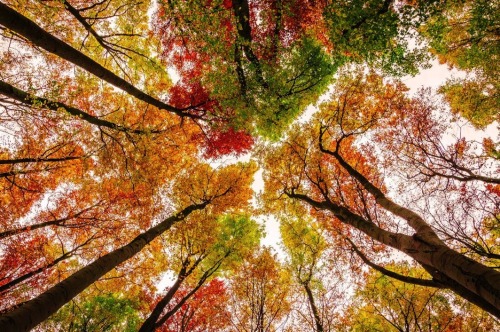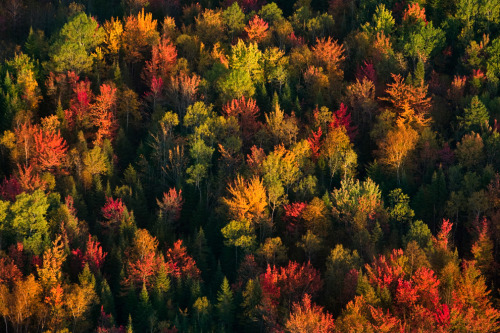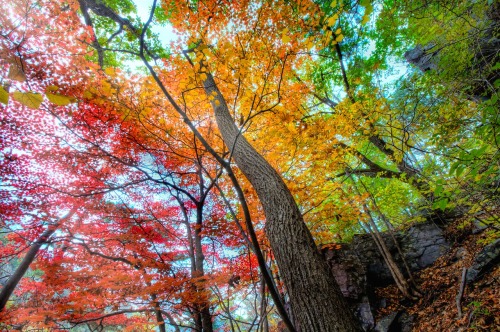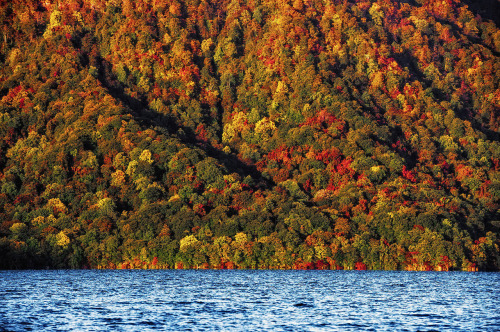nubbsgalore:leaf senescence begins with the advent of the summer solstice, as the days get shorter
nubbsgalore: leaf senescence begins with the advent of the summer solstice, as the days get shorter and sun becomes more distant. trees begin to reduce the production of chlorophyll – a green pigment critical to photosynthesis – and eventually begin to break down that which remains in the leaf in order to reabsorb its nitrogen. as the green of leaves consequently begins to fade, other pigments in the leaf – carotenoids and flavonoids – also see reduced production in the leaf, but at a much slower rate than chlorophyll, which enables their yellow and orange colours to be expressed. for some trees, colder temperatures trigger the synthesis of the flavonoid anthocyanin, causing those leaves with lower levels of other flavonoids or carotenoids to turn red. if other pigments are sufficiently present, the colours can blend into auburn. it is believed that trees will produce anthocyanin to protect themselves from sap sucking insects that would otherwise be drawn to the yellow and orange colours of their leaves. eventually, these non chlorophyll pigments fade themselves as the tree, in preparation for winter, denies its leaves water (otherwise transported through some of the veins seen here). in an effort to also retain nutrients, a deciduous tree will then signal the abscission cells at the base of its leaves to swell. this not only blocks the flow of nutrients but ultimately causes the leaves to tear away and fall to the ground, where the tree can then reabsorb any leaf nutrients through its roots after its winter dormancy. (click pic or link for credit x, x, x, x, x, x, x, x, x, x) -- source link
Tumblr Blog : nubbsgalore.tumblr.com









